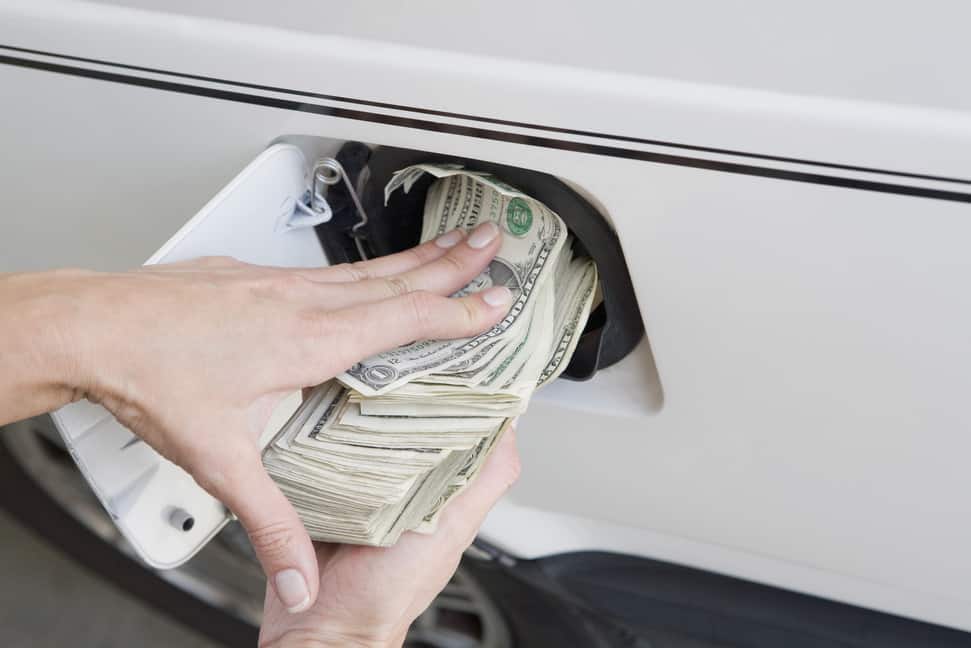26 March 2018 Concept Car
How to find the car that’s right for me? It’s a question that many of our customers are racking their brains about before setting foot in our showroom. And it’s a more than understandable one, at that. With endless models to choose from and numerous potentially suitable options at your disposal, car shopping may never have been harder.
As overwhelming as things can get, however, choice is never really a bad thing. What you need is a strategy to make decisions easier and to separate the wheat from the chaff. Once you have your priorities straight, finding the car of your dreams will suddenly seem a lot less intimidating.
In this guide, we have put together the 13 most important steps towards achieving that goal. If that’s not enough and you find yourself needing additional support, we’re here to help and to answer all the questions you may have.
Before you even open up a browser tab to search for interesting vehicles, you first need to face the most important topic of all:
What do you need a car for?
This may seem like a trivial question. In reality, however, most buyers are finding it exceedingly hard to distinguish between the car they would like to own and the one that actually meets their needs.
Call it the difference between the right and the left hemisphere of your brain, between logic and emotion.
Whatever you call it, however, basing your choices on the wrong side of the brain can cost you many thousands of Pounds. Some experts, including the world-famous ‘Mr Money Mustache‘, will tell you that there is “NO valid personal use for a new full-size pickup of any sort” and that the only justifiable reason to buy a car is to move you from one place to the next safely.
Although that may be taking sobriety too far, there are many good reasons to only pay for what you genuinely need.
Ask yourself the following questions, compiled by car information service edmunds:
These questions may appear to be straight-forward, but it makes sense to give them some serious thought. Just to give you one example: Consumer Reports rightly warns that in many cars, “the center-rear position may be so uncomfortable that it barely qualifies as a seat”. So this seemingly trivial detail is something you need to take into consideration as well.
This may well be the most unpleasant question in the entire buying process. At the same time, it is hard to argue with budget limitations: You can only spend so much and finding suitable financing can be tricky (or outright impossible). Which means that you will need to arrive at a realistic estimate of how much money you can afford to invest into a new vehicle.
Some reckon that the maximum should be 20% of your monthly income. Others already consider this a risky proposition. Either way, it makes sense to do some serious number crunching.

Once you’ve set your budget, you may arrive at the conclusion that you’re unable to afford buying a car at this point. If you desperately need one, that may put you in a difficult spot.
Which is why, if push comes to shove, you should consider leasing a car. By leasing a car, you won’t need to spend the entire purchasing price in one go. Monthly rates can be very competitive and will tend to be lower than most loan payments. In most cases, you are also able to switch cars every two to three years, which may be a nice bonus.
On the other hand, you will never actually own the car yourself when leasing. You will not be allowed to make modifications and there are very often mileage penalties should you exceed a predefined limit.
In the long run, buying will usually be cheaper than leasing and all of the above only applies to new cars anyway. With used cars, the economics can be entirely different and in most cases, they tend to beat leasing in terms of pricing. So take your pick wisely.
Which brings us to another essential consideration: To buy a new car or a used car? Although it is easy to see why ‘new’ can seem extremely appealing, we would like to give you a few reasons why used is actually the ‘new new’:
Used cars tend to generally be of excellent quality. Dealers will usually refurbish and completely overhaul them, so that they will often look as good as new to an untrained eye. Cars can easily be driven until they’re 15 or more years old and mileages of half a million miles are by no means unusual. So when buying a 5 year old car, its best years may still be ahead of you.
Cars lose a lot of value over the first 3 years. Depreciation is to blame for this and it’s something that applies, more or less, to all brands. This means that you can buy a car that has hardly been driven at a significantly reduced price.
The market for used cars has exploded over the fast decade. Today, you can chose between all major brands and cars from all classes and categories. This means that you are almost certain to find the car that’s right for you even if you restrict yourself to the second hand market.
This is not to say that new may not be the right choice for you. It does mean, however, that you should carefully consider whether or not it’s wise to really shell out this much money.
So far, we have mainly discussed ‘objective’ aspects of buying a car. Needless to say, though, personal preferences play a vital role, too. Although these points should not be top priorities, they should definitely factor into your decision:
Questions such as finding the right colour obviously also need to be considered.

We can only touch upon this subject briefly, since it’s really an entire world of its own. But without a single doubt, safety should be one of your most important considerations when finding the car that’s right for you. Thankfully, most cars these days perform great in this regard. But there are still clear differences between models. Which means that it pays off to invest some time into safety considerations.
There are plenty of excellent resources to find relevant and up to date car safety ratings:
Size does matter, but it may not matter as much as you think. Perhaps in some parts of the world, your social status may depend on how big your car is. But in the UK, we have thankfully moved on from that position. It’s for a reason that the Mini continues to be both one of the most sold and coveted and least depreciating models around.
What’s more, as Wikihow has correctly pointed out, even small cars can be pretty spacious on the inside. Especially if you only need your car for short drives to work or to go shopping, a bigger car may actually be impractical.
And needless to say, smaller cars can save you a lot of money.
Almost any single article on how to find the right car mentions fuel efficiency as one of the most important considerations.
At a first glance, this seems to make perfect sense.
After all, with petrol prices notoriously unpredictable and with fuel efficiency also factoring into your car taxes, it would appear to be pretty obvious to at least make fuel consumption one of the main criteria for selecting your next car.
In reality, the actual savings between an extremely fuel-efficient model and a less efficient one rarely amount to much. Most of today’s models are pretty economical and unless a Hummer is the only car you’ll ever want to drive, even many SUVs have pretty decent fuel records. The same goes for taxes, where the differences hardly ever exceed a few Pounds per year.
So does this mean that fuel efficiency doesn’t matter? Not at all. With our planet now firmly in a climate crisis, keeping CO2 emissions low seems to be an imperative. Just be aware that you won’t be saving a lot of money (if any) while saving the world.
Whereas fuel efficiency may not be as decisive as you might have thought, the question of which fuel type is ideal can make a huge difference. Electric cars are undeniably the future, but right now, they’re not quite up to the same standards as most petrol-driven vehicles.
Which leaves a choice between petrol and diesel. According to Carbuyer.co.uk, there is a very simple rule of thumb in this regard:
“If you cover fewer than 12,000 miles a year, a petrol engine is best. Diesel cars cost more to buy than their petrol counterparts, and you’ll need to cover quite a lot of miles to make up the difference in fuel savings.”
A diesel can be more efficient if you intend to use it for regular longer trips. This is because to prevent soot from forming in the diesel filter, you will need to drive it at higher speeds from time to time.

All too often, potential buyers forget to factor running costs into the equation. This can be a costly omission. You can prevent unpleasant surprises by taking them into your considerations right from the start:
The body style of your future car is almost as important as the actual model itself. This is because the body style determines to a vast degree what you will be able to do with your car:
In some cases, station wagons may be available from certain brands at highly competitive prices. At the same time, you should really ask yourself if you can actually put all that extra space to good use. If not, you may be spending more on fuel and taxes without getting anything substantial in return.
Most potential buyers will already have a firm favourite before they even start researching.
The downside to this is that your subjective preference for a specific model is mostly purely emotional. And as we’ve tried to show you before, as important as emotions are as part of the selection process, they’re hardly the most important criterion around.
This is another reason why you need to take your favourite model for a test drive. It wouldn’t be the first time that what you thought to be a dream car turns out to be a bitter disappointment on the road.
Another important point is to consider many different cars within the same class. Once you actually take the time to summarise all the benefits and disadvantages of different models, you will quickly discover that there are usually far more great choices than you initially thought!
The end of year-lists of leading car publications are a great point of departure. And if you really can’t make up your mind, car website jalopnik has created a humorous and helpful flow chart to assist you in your decisions.
After you’ve made up your mind, there’s only one thing left to: Deciding on where to actually buy the car that’s right for you. Some of the most important points of consideration are the following:
Since your dealer will also be your contact in case of repairs and problems with your car, your choice of dealership should never just be based on cost alone (although it is obviously an important aspect). If you select your dealer based on a combination of money, financing and competence, you have all the right conditions to make sure you’ll find the car that’s truly right for you.
26 March 2018 Concept Car